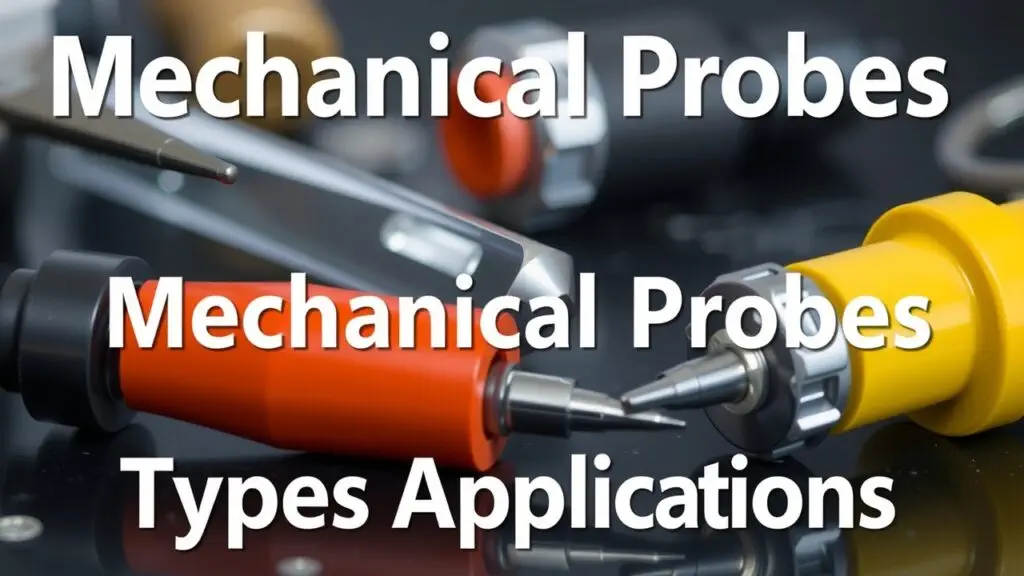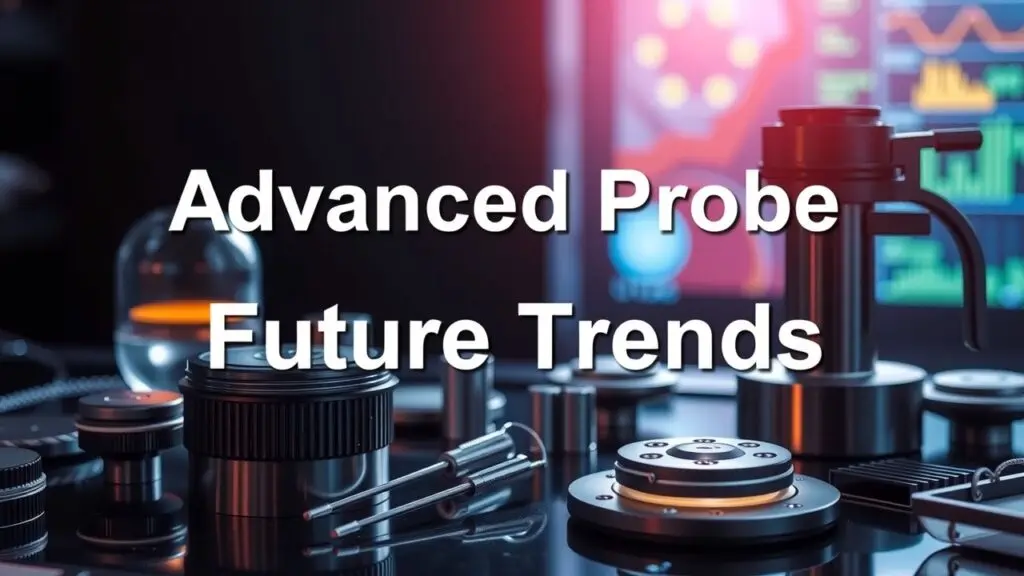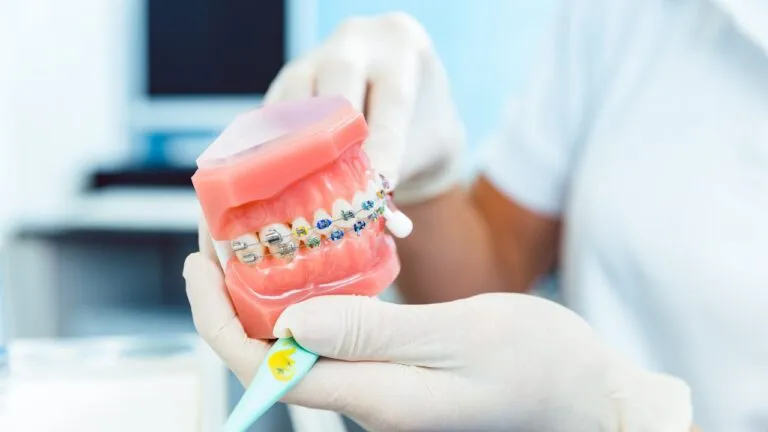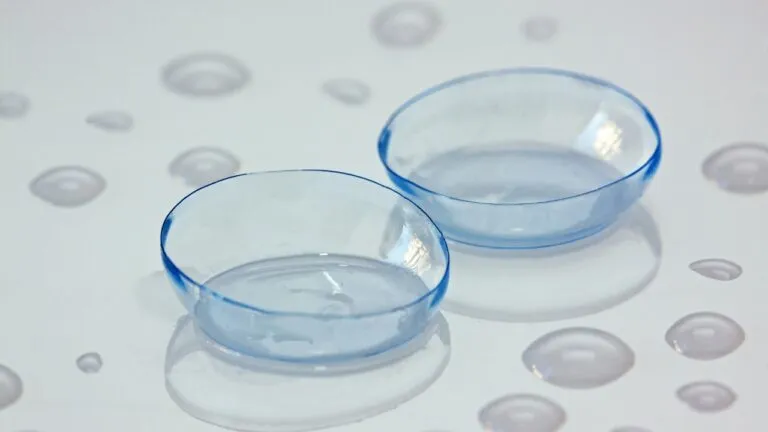Learn about the different types of probes used in medicine and research. This complete guide covers PCR probes, ultrasound probes, and dental probes, detailing their applications and advantages.
What is a Probe?

A probe is a tool that measures or interacts with physical properties in different environments. It helps gather data for research, diagnostics, or quality control. Probes come in various types based on what they do. Some common classifications include electrical probes, mechanical probes, optical probes, thermal probes, and acoustic probes. Each type is made for specific tasks and has its own unique features.
Applications Across Diverse Fields
Probes are used in many fields:
- Electronics: Electrical probes test circuits to ensure they work properly.
- Medical: Medical probes help with imaging techniques like ultrasound or MRI to collect important information about patients.
- Material Science: Industrial probes measure temperature and pressure to see how materials act under different conditions.
These examples show how important probes are for technology and healthcare while keeping safety in mind.
Why Choosing the Right Probe is Critical?
Choosing the right probe matters because it affects measurement accuracy and data reliability. Picking the wrong one can lead to wrong results which might hurt experiments or product quality. For example:
- A probe that isn’t sensitive enough may miss small changes in readings.
- If a probe isn’t calibrated correctly, it can create unsafe conditions when measuring things like temperature or pressure.
This shows that understanding factors like sensitivity range and frequency response is key when using probing techniques in all fields.
Overview of Probe Types Covered
Here’s a quick summary of the main types of probes and what they do:
| Type | Functionality |
|---|---|
| Electrical Probes | Measure voltage and current; test circuits |
| Mechanical Probes | Measure dimensions; assess force |
| Optical Probes | Examine light properties; used in spectroscopy |
| Thermal Probes | Track temperature changes |
| Acoustic Probes | Analyze sound waves; often used in sonar |
This table gives an easy way to understand each category before diving deeper into their specifics later on.
Electrical Probes: Types, Applications, and Considerations
Types of Electrical Probes
Electrical probes are tools that help measure electrical properties. They come in different types for various tasks:
- Voltage Probes: These probes check the voltage between two points in a circuit. They’re really helpful for fixing issues in electronics.
- Current Probes: These measure electric current. They can be clamp-type or inline models.
- High-Frequency Probes: Used mainly in RF applications, these probes keep the signal clear at high frequencies.
- Resistive Probes: They check resistance by applying a known voltage and measuring the current that flows.
- Capacitive Probes: These are for measuring changes in capacitance within circuits and are useful for dynamic systems.
- Inductive Probes: These detect magnetic fields from alternating currents and are good for non-invasive testing.
Knowing about these probe types helps you pick the right tool for your job.
Measurement Principles
To get accurate data, electrical probing uses basic measurement principles. Key methods include direct contact and non-contact approaches like electromagnetic induction or capacitive coupling. Each method has pros and cons based on what you need and the environment around your setup.
Applications
Electrical probes have a wide range of applications in different industries. They are used in:
- Electronics manufacturing
- Telecommunications
- Automotive diagnostics
- Instrumentation testing
Engineers use these tools to make sure components work well under set conditions. They also help troubleshoot faulty equipment by providing accurate measurements with specific electrical probes designed for those tasks.
Key Specifications
When picking an electrical probe, think about important specifications:
- Sensitivity: This tells how well a probe can pick up small changes in voltage or current.
- Accuracy: This shows how close the measured value is to the actual value.
- Other specs to consider include bandwidth (especially for high-frequency uses), input impedance (to reduce loading effects), and temperature range based on what you’re doing.
These details affect how reliable your measurements will be during testing.
Advantages and Disadvantages of Different Designs
Each type of electrical probe has its own benefits and downsides:
- Voltage probes are easy to use but can cause loading errors if circuit impedances don’t match well.
- Current clamps are user-friendly because they don’t interrupt circuits but may not be as precise as inline designs that require breaking the circuit.
- High-frequency designs work well with signals but may cost more due to the materials used to build them.
Weighing these factors helps you find what works best based on your specific needs while keeping costs reasonable.
Safety Precautions
When working with high voltages or currents, safety is key:
- Always wear proper personal protective equipment (PPE).
- Make sure all connections are tight before turning on any device being tested.
- Use insulated tools rated for the voltages you’ll encounter.
- Be careful of arc flash risks when near live circuits; de-energize equipment whenever possible before making changes or taking readings.
By understanding these elements about electrical probes—types available along with their uses—you’ll improve your ability as an engineer or technician to take accurate measurements across different situations, leading to reliable outcomes throughout your work activities.
Mechanical Probes: Types, Applications, and Considerations
Types of Mechanical Probes
Mechanical probes play a key role in measuring physical properties across many fields. The main types include:
- Pressure Probes: These measure the pressure in gases or liquids. They are common in industrial automation for monitoring processes.
- Force Sensors: These sensors detect force applied to objects and turn that mechanical force into an electrical signal. They are useful in robotics and material testing.
- Displacement Probes: These tools measure how far an object moves from its original position. They are crucial in engineering where precision is needed.
- Sensor Probes: This broader category includes various sensors designed for specific measurements like temperature or humidity alongside mechanical parameters.
Measurement Principles
It’s important to know how these mechanical probes work to get accurate readings. Here are two common principles:
- Strain Gauge: This method measures deformation (strain) when a material is under stress. When the material deforms, its electrical resistance changes. This change can be measured accurately.
- Capacitive Sensing: Capacitive sensors detect changes in capacitance due to distance changes between two conductive plates or dielectric changes when materials touch each other.
Applications
Mechanical probes have many applications in different industries:
- Industrial Automation: They are widely used for process control systems to ensure precise measurements for smooth operations.
- Material Testing: They help evaluate properties like tensile strength and elasticity during product development.
- Biomedical Engineering: Used in medical devices requiring accurate measurement of forces or pressures within biological systems.
These examples show their versatility and importance in collecting reliable data across various sectors.
Key Specifications
When choosing a mechanical probe, consider these key specifications:
- Accuracy tells how close a measured value is to the true value, affecting overall performance.
- Range shows how far the probe can effectively operate without losing reliability.
- Resolution is the smallest change the probe can detect; finer resolution allows for more detailed analysis.
- Durability indicates how well a probe stands up to environmental factors like temperature changes or chemical exposure without losing performance.
These specifications impact both functionality and longevity of the probes used in any application.
Advantages and Disadvantages of Different Designs
The design you choose can affect measurement accuracy and robustness:
Advantages:
- Some designs offer better sensitivity, which helps with detecting small changes.
- Strong construction materials give better durability against harsh environments, leading to longer life spans.
Disadvantages:
- Complex designs may cause calibration issues that affect reliability if not handled properly.
- High-sensitivity models might be more prone to noise interference, which can compromise data quality during critical measurements.
Calibration and Maintenance
Regular calibration ensures mechanical probes provide accurate results over time.
Calibration involves adjusting settings based on known standards before use, with regular checks during operation depending on industry needs or manufacturer guidelines.
Maintenance includes routine inspections, cleaning components as needed, and replacing worn parts quickly to avoid performance issues over long periods of use.
Optical Probes: Types, Applications, and Considerations
Types of Optical Probes
Optical probes are important tools in many fields. They help scientists take precise measurements. Here are some main types:
- Fiber Optic Probes: These use light that travels through fibers to measure things like temperature or pressure. They work well in areas where regular electronic sensors can’t function due to interference.
- Confocal Probes: These are often used in microscopy. They improve image quality by using a special pinhole that blocks out-of-focus light. This makes it easier to see tiny details in biological samples.
- Fluorescence Probes: These detect specific molecules by measuring the light they emit after being excited by other light. They’re really useful in medical research and tests.
Each type of optical probe has different uses based on its features.
Measurement Principles
Optical probes depend on basic rules of how light interacts with matter. When light hits an object, it can be absorbed, reflected, or passed through based on the material and the light’s wavelength. Understanding these rules helps in creating probing techniques that improve sensitivity and accuracy.
For example, fluorescence probes make use of the absorption-emission process to give detailed info about molecular structures. Confocal microscopy uses focused lasers for better depth resolution and less background noise from other layers.
Applications
Optical probes are widely used across many fields:
- Microscopy Applications: They help scientists see at cellular levels in biological studies.
- Spectroscopy Applications: These probes analyze chemical compositions by looking at how materials absorb or emit light.
- Remote Sensing Applications: They collect data from large areas without needing direct contact with what’s being studied, which is helpful for environmental monitoring.
These examples show how versatile optical probe technology is across different sciences.
Key Specifications
When choosing an optical probe, keep these specifications in mind:
- Resolution Specifications: This indicates how clearly details can be seen; higher resolution gives more accurate images.
- Sensitivity Specifications: This refers to a probe’s ability to detect small changes or low amounts; this is very important for medical tests.
- Spectral Range Specifications: This shows which wavelengths can be measured effectively; wider ranges allow for more uses but may need special parts for best results.
Knowing these specs helps users pick the right tools for their needs.
Advantages and Disadvantages of Different Designs
Different designs affect image quality and measurement accuracy:
- Fiber optic designs are flexible but may lose signal over long distances.
- Confocal designs give great depth perception but can be more expensive due to complex optics.
- Fluorescence designs are great for finding low levels of targets but rely on careful labeling that can vary if not managed well.
Thinking about these points helps when deciding on the best optical probe type based on what you need for your project.
Safety Precautions
Safety is very important when using optical probes, especially with lasers found in confocal microscopes or fluorescence systems:
Follow these laser safety guidelines to reduce risks:
- Always wear proper protective glasses made for the wavelength you’re using.
- Make sure all equipment meets safety standards before using it.
By following these safety tips during experiments with powerful lasers, you create a safer working environment while achieving good results.
Thermal and Acoustic Probes: Types, Applications, and Considerations
Types of Thermal Probes
Thermal probes are key tools used to measure temperature in various situations. Here are the main types:
- Temperature Probes: These include thermocouples and thermistors that give accurate temperature readings in many conditions.
- Thermocouples: These are made from two different metals joined together. They create a voltage that relates to the temperature difference between the junction and a reference point. They’re tough and can measure a wide range of temperatures.
- Thermistors: These sensors change their resistance with temperature changes. They are very sensitive but work best in a smaller temperature range compared to thermocouples.
- Infrared Probes: These use infrared technology to measure surface temperatures without touching them. This is great for dangerous environments or moving objects.
Measurement Principles of Thermal Probes
The effectiveness of thermal probes depends on several principles:
- Probe Accuracy: This tells how close the reading is to the actual temperature. Good thermal probes usually have small differences from true values.
- Probe Sensitivity: This shows how well a probe reacts to small temperature changes; higher sensitivity leads to more precise measurements.
- Measurement Principles: Knowing how each type works—like electrical resistance changes for thermistors or voltage creation for thermocouples—is vital for picking the right tool based on what you need.
Applications of Thermal Probes
Thermal probes are useful in many fields:
- In industries, they help monitor equipment temperatures to avoid overheating.
- Scientific research uses them for experiments that need exact thermal control.
- In healthcare, special thermal probes are used to monitor patients during surgeries or diagnostics.
Key Specifications for Thermal Probes
When selecting thermal probes, consider these important specs:
| Specification | Description |
|---|---|
| Accuracy | How close the measured value is to the real value |
| Range | The span of temperatures over which the probe works |
| Resolution | The smallest change in temperature that can be detected |
These factors affect performance depending on specific uses.
Types of Acoustic Probes
Acoustic probes play a big role in many sensing tasks using sound waves. Common types include:
- Ultrasonic Probes: They send out ultrasonic waves that bounce off surfaces or materials being tested. This helps measure distance or material properties based on how the waves behave.
- Ultrasound Transducers: Mainly used in medical imaging, these convert electrical energy into sound waves and back again, allowing us to see inside the body through echolocation techniques.
Measurement Principles of Acoustic Probes
To understand acoustic probing techniques, you need to grasp some key principles:
- Probing Techniques: There are various methods depending on whether measurements are based on reflection (like ultrasound) or transmission methods.
- Measurement Principles:
- Sound speed changes with medium density, so knowing this helps determine distances correctly.
- Signal processing helps interpret data from received echoes, making sure results are reliable under different conditions.
Applications of Acoustic Probes
Acoustic probes have vital roles in several areas including:
- In medical imaging like ultrasound scans where they provide real-time images for diagnoses without needing invasive methods.
- Non-destructive testing checks materials’ strength by finding flaws inside using reflected sound waves.
- Industrial automation systems use acoustic sensors for object detection and positioning tasks, improving efficiency in operations.
Key Specifications for Acoustic Probes
Key specifications that impact performance include:
| Specification | Description |
|---|---|
| Frequency Response | The range over which the probe effectively detects signals |
| Sensitivity | The ability to pick up weak signals despite noise |
| Accuracy | How precise the measurements of distances are |
Choosing an acoustic probe means paying attention to these specs while making sure it fits specific application needs.
Choosing the Right Probe: A Step-by-Step Guide
Defining Measurement Requirements
When you pick a probe, it’s super important to know what you need it for. Different types of probes work for different jobs, and knowing your needs helps a lot. The main things to think about are accuracy, resolution, and sensitivity.
- Accuracy tells you how close the measured value is to what it should be. For example, in medical settings, high-accuracy probes are a must.
- Resolution shows the smallest change the probe can detect. Better resolution means you can get more detailed info.
- Sensitivity is about how well a probe picks up changes. Probes that are more sensitive can spot smaller differences.
By looking at these factors for your specific task—like testing electrical stuff or checking materials—you can make better choices.
Environmental Considerations
The environment where you use the probe matters a lot. Some environmental probes are built for specific situations like temperature or pressure.
For example:
- Temperature Probes: These are used in fields like food processing and medicine where keeping exact temperatures is really important.
- Pressure Probes: These monitor systems that often deal with changing pressures. They need to handle different conditions without losing quality.
Also, think about humidity levels that could affect readings or even damage some probes over time.
Step-by-Step Decision-Making Process
Choosing the right probing method can be done in steps:
- Figure out what measurements you need based on your application (like accuracy).
- Think about environmental factors that might affect how it works (like temperature).
- Check the specifications against what your project needs (like range).
- Look at your budget along with options from trusted sellers.
- Make a decision based on all the info you’ve gathered to get the best results from your chosen tools.
Using this clear approach makes it easier to handle tricky choices related to different types of probes while boosting confidence in what you’ve selected for your projects or research tasks.
Probe Calibration, Maintenance, and Safety
Calibration Procedures
Calibration is super important for probe accuracy and sensitivity. It helps keep the measurements right by checking them against known standards. This usually means comparing the probe’s output to a reference standard in a controlled setting.
Here’s how to do probe calibration:
- Preparation: Get all needed tools like reference standards, measurement devices, and set up the environment.
- Initial Testing: Measure something you already know with the probe to see how it performs.
- Adjustment: If there are differences between what the probe says and the standard, make adjustments or recalibrate.
- Documentation: Write down everything you find and any changes you make during calibration for future reference.
How often should you calibrate? Well, it depends on how much you use the probe. Some probes need checks every month if they’re used a lot, while others might only need calibration once a year.
Maintenance Practices
Good maintenance helps keep probes working well for longer. Here are some key things to remember:
- Cleaning: Clean your probes regularly to get rid of dirt or substances that can mess with readings or harm parts. Use safe solvents based on what materials your probe is made from.
- Sterilization: For medical probes, use proper sterilization techniques to stop infections during procedures.
- Handling Best Practices: Handle probes by their insulated parts whenever possible so you don’t damage sensitive tips or sensors.
By following these maintenance practices, you can help make sure your probes work reliably over time.
Safety Precautions for Specific Probe Types
Safety is key when using different types of probes:
- Electrical Probes: Stick to safety rules for electrical work. This keeps everyone safe from shocks or short circuits.
- Laser Probes: When using lasers, always wear protective eyewear to protect your eyes from harmful light.
- Hazardous Materials Handling: If you’re dealing with dangerous materials, wear personal protective equipment (PPE), like gloves and masks, and use fume hoods when necessary.
Knowing these safety tips can help reduce risks when using various probes.
Advanced Probe Technologies and Future Trends

Emerging Probe Technologies
Recent progress in probe technologies has led to cool tools that improve measurements in many fields. Nanoscale probes are super important, helping scientists look at materials and living things at tiny levels. These probes give us details about how molecules work together, which is great for studies in nanotechnology and material science.
Microfluidic probes are also a big deal. They can handle small amounts of liquid precisely. People use them a lot in medical tests and chemical studies because they let us do many tests with tiny samples all at once. The design of these probes often comes with neat features like built-in sensors that track things like temperature or pressure during experiments.
Also, sensor probes have come a long way, mixing smart tech for real-time data gathering and analysis. This makes measurements more accurate and cuts down on mistakes from human handling. As researchers continue to innovate with advanced probe designs, we can look forward to even better probing techniques for different uses.
Frequently Asked Questions (FAQs)
What are the main types of qPCR probes?
The primary types of qPCR probes include hydrolysis probes, molecular beacon probes, and dual hybridization probes. Each type serves a unique function in quantifying DNA or RNA.
How do fluorescent reporter and quencher work in probe design?
A fluorescent reporter emits light when excited. The quencher absorbs this light, preventing it from being seen. This process allows for specific detection during PCR.
What is the significance of probe optimization in PCR?
Probe optimization enhances sensitivity and specificity. It helps ensure accurate quantification of target sequences, improving overall experiment reliability.
What are the different types of ultrasound transducers?
Common types include linear, convex, phased array, and pencil transducers. Each type is suited for specific imaging applications like abdominal or cardiac assessments.
How do you choose the right ultrasound probe?
Consider factors such as frequency, imaging depth, and intended application. Matching these characteristics ensures optimal performance in your diagnostic tasks.
Key Types of Probes in Various Applications
Dental Probes:
- Measure periodontal pocket depth.
- Evaluate gum health and detect gum disease.
- Come in single-ended and double-ended designs for flexibility.
Molecular Probes:
- Include qPCR probes like hydrolysis and molecular beacon types.
- Used in gene expression analysis and pathogen detection.
- Rely on specific designs for accurate DNA sequence targeting.
Ultrasound Probes:
- Different transducer types cater to various imaging needs.
- Used for cardiac imaging, OB/GYN studies, and musculoskeletal assessments.
- Must match clinical requirements for effective diagnosis.
Research Probes:
- Include nanoscale and microfluidic probes for advanced studies.
- Help analyze small quantities of materials or fluids accurately.
- Enable high-throughput screening in research settings.
Environmental Probes:
- Designed to monitor water quality and atmospheric conditions.
- Used in geophysical studies to assess soil characteristics.
- Provide essential data for environmental monitoring projects.
Industrial Probes:
- Employed for quality control in manufacturing processes.
- Measure temperature, pressure, or other critical parameters.
- Ensure products meet industry standards through reliable data collection.
These key points highlight the diversity of probes used across various fields, underscoring their importance in advancing technology and healthcare solutions.
Related Topics
- Types of Electrical Probes
- Types of Mechanical Probes
- Types of Thermal Probes
- Types of Acoustic Probes
- Types of qPCR Probes
- Types of Ultrasound Transducers
- Types of Dental Probes
- Types of Molecular Probes
- Types of Research Probes
- Types of Environmental Probes
- Types of Industrial Probes



Types of Probes: A Complete Guide to Ultrasound, PCR, and Dental Probes